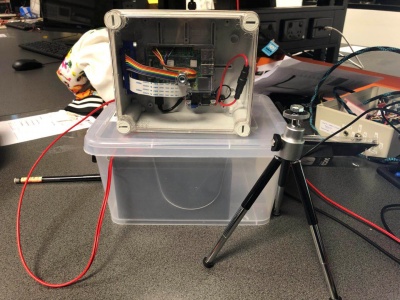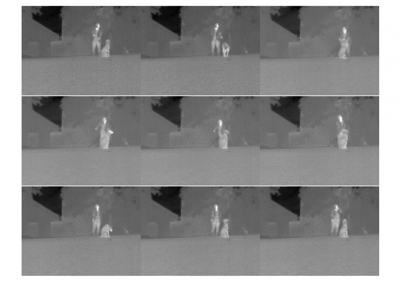Projects:2017s2-295 Feral Animal Detection using IR Thermal Imagery
Contents
Introduction
In Australia, especially in South Australia, numerous native species are killed by feral cats each year. In order to protect these animals and control the quantity of feral cats, it is necessary to design and build a system that can detect those cats, that is, automated sensor hardware image processing system, which could detect the local feral cat distribution. Image processing technology means that an image is analysed by a computer to achieve the desired result. This project is mainly to collect image data, and get on screening analysis of feral cats or other species for recording and distinguishing to simulate the situations in real world. It is worth mentioning that this is the second cycle of the project. This year, the project aims to rebuild the hardware and detection system, and process the resulting images to extract the shape of animals. At the end of this thesis, there are some conclusions after comparing with the initial dataset to find if the new system improves accuracy.
Objectives
This is the third year of the project, there is already an old system built by Richard & Yang, and we aim to redesign one improved process system in order to redevelop a new database. The images wanted are mostly concentrated at night, dusk, and dawn, then near IR camera and thermal camera can capture images of animal moving in front of the sensors. The several aims are as follows. Rebuild the hardware using improved devices Capture images and collect data as much as possible Test detection algorithms Do image processing to extract animals from background and give feedback whether the detection is effective Comparing the two systems, we may find whether the new one could improve the accuracy and speed.
Overview
The entire system can be easily portable and it can be tested in any scenario. The following figure shows a brief overview of the system. The angles of the two cameras are adjusted to make the shooting range approximately the same, and the pixel values of the pictures are analysed by continuously taking pictures at the beginning to improve the detection algorithm. This process is a loop throughout the entire project.

New system assembly
The hardware is assembled into a closed box. The two cameras are on the left side of the box. They are fixed to the front of the box by blue fixing plates. The embedded circuit board is fixed in the middle of the box. The circuit board under the box is the power system. The power interface is used at the bottom of the box for external power supply equipment.

Design
The sensor module is a very important part. The following figure shows the overall design of the sensor module,
Frame difference method
We first obtain the absolute value of the image brightness difference according to the difference between the images of the adjacent two frames, and then distinguish the motion area from the non-motion area according to the set threshold.

Background difference method
The background difference method is to detect the target animal by comparing the absolute value of the subtraction between the current frame pixel and the background pixel with a set threshold.
Result
Outdoor shooting results are less than ideal. As shown in the figure below, one is that the camera is farther away from the animal (the heat source occupies a smaller proportion of pixels), and the background temperature is relatively complex. So the end result will miss many heat images. The improvement plan is to advance the camera distance (the best distance is 2 meters apart). Secondly, the shooting time is best chosen in the evening, so the reason for this selection is that the background temperature is relatively stable for easy detection.

Data collection
Since the camera is not fixed at the beginning, it can only be shot indoors. Later on, as the system was packaged in boxes, our usual practice was to set up the system to collect data in the evening and around 6am. Because the background temperature is relatively stable during this period.
Data process
Conclusions
The design process of this project has always been a cyclic process. By designing detection algorithms, real-time capture of photographs, testing of experimental data, and updating of detection algorithm steps improve system performance.
Future works
1 Continue to capture pictures of different animals and establish a large database. 2 Continue to improve detection algorithms to increase storage efficiency. 3 Purchase another lepton 3(or with higher resolution), use the binocular range finding method to determine the size of the animal, and provide strong supporting evidence for judging the animal species. 4 Use different algorithms for image processing to calculate the accuracy of animal recognition and make conclusions whether the system is optimized. 5 Improve the hardware device to make it be able to working under a variety of weather conditions.
Project Team
Ziwen Wang
Shanshan Li
Supervisors
Danny Gibbins
Said Al-Sarawi

